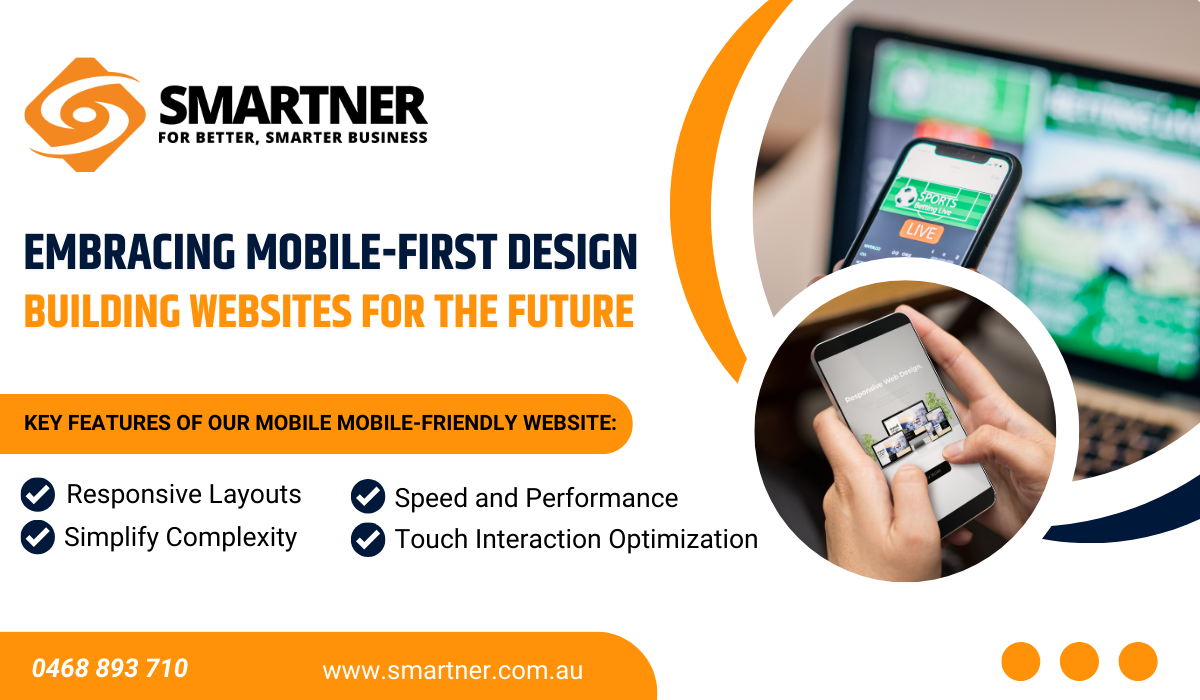In today’s digital world, smartphones have revolutionized our online interactions. Whether we’re browsing social media or shopping online, mobile devices have become indispensable. As a result, websites are now crafted with a primary focus on optimizing their performance on phones and tablets first. This strategic approach, known as mobile-first design, lies at the core of modern digital marketing companies.
In this blog, we delve into what mobile-first design entails, why it holds significant importance for businesses in 2024, and how it can profoundly impact your online presence. Discover how adopting this approach can elevate your digital marketing strategies and empower your business for the mobile-centric future.
What is Mobile-First Design?
Mobile-first design is a strategic approach to web design where websites are initially crafted for mobile devices before scaling up to larger screens. This methodology ensures that the website functions seamlessly and optimally on smaller screens, providing users with a cohesive and intuitive experience across all devices.
Why is Mobile-First Design Important?
The shift towards mobile internet usage is undeniable and accelerating. With a majority of users accessing websites through their smartphones, businesses must prioritize mobile-first design to meet the expectations and preferences of their audience. Furthermore, search engines like Google now prioritize mobile-friendly websites in their rankings, making mobile-first design essential for maintaining visibility and competitiveness.
The Principles of Mobile-First Design
Mobile-first design is guided by several core principles that aim to enhance usability and performance on mobile devices:
- Simplify Complexity
Focus on essential elements and functionalities to streamline the user experience.
Prioritize content hierarchy based on mobile user needs to avoid clutter. - Speed and Performance
Optimize load times to minimize bounce rates and improve user engagement.
Utilize techniques such as image compression and minification of CSS/JavaScript files to enhance performance. - Responsive Layouts
Design flexible layouts that adapt seamlessly across different screen sizes and orientations.
Ensure readability and usability across various devices by testing and refining responsive design elements. - Touch Interaction Optimization
Use larger, tappable buttons and interactive elements to accommodate touch-based navigation.
Implement intuitive gestures and controls that enhance user interaction and satisfaction. - Content Prioritization
Highlight key information prominently for quick access on mobile screens.
Condense content without sacrificing clarity or comprehensiveness to optimize mobile user engagement.
Mobile-First Design Best Practices
To effectively implement mobile-first design, consider the following best practices:
- Design for Touch Interaction
Ensure buttons and interactive elements are large enough for easy tapping.
Optimize touch targets to minimize accidental clicks and improve user experience. - Content Strategy
Prioritize content based on mobile user behavior and preferences.
Use concise and compelling language to convey key messages effectively on smaller screens. - Navigation Optimization
Simplify navigation menus and ensure they are easily accessible on mobile devices.
Implement search functionalities and filters to help users find information quickly. - Performance Optimization
Continuously monitor and optimize website performance to maintain fast load times.
Leverage caching mechanisms and content delivery networks (CDNs) to enhance page speed. - Usability Testing
Conduct regular usability tests on different mobile devices and browsers.
Gather feedback from users to identify pain points and areas for improvement in mobile design.
The Benefits of Mobile-First Design
Adopting a mobile-first design approach offers numerous advantages for businesses:
- Improved SEO: Higher search engine rankings due to mobile-first indexing and better user experience metrics.
- Enhanced User Engagement: Increased user satisfaction and reduced bounce rates lead to longer sessions and more interactions.
- Higher Conversion Rates: Streamlined user journeys and optimized forms result in improved conversion rates on mobile devices.
Mobile Design Trends to Watch in 2024
Looking ahead, several mobile design trends are shaping the future of mobile-first design:
- Augmented Reality (AR) Integration
Enhance user engagement with immersive AR experiences directly accessible via mobile browsers. - Voice Search Optimization
Optimize content and navigation for voice-activated searches, leveraging advancements in AI assistants. - Dark Mode and Accessibility Features
Integrate dark mode options and accessibility enhancements to cater to diverse user preferences and needs. - Personalization and AI-driven Experiences
Utilize AI algorithms to deliver personalized content and recommendations based on user behavior and preferences. - Mobile-First E-commerce Experiences
Develop seamless mobile shopping experiences with features like one-click purchasing and real-time inventory updates.
Mobile-first design is not just a trend but a strategic imperative for businesses aiming to succeed in 2024 and beyond. By prioritizing mobile users and implementing mobile-first design principles and best practices, you can enhance user experience, improve performance metrics, and ultimately drive business growth.
Ready to optimize your website for mobile users?
Ready to transform your website for the mobile era? Discover why Mobile-First Design is crucial for your business in 2024 with Smartner your trusted SEO service agency. Whether you’re aiming to enhance user experience, boost SEO rankings, or increase conversions, our expert team is here to guide you. Contact us today at 0468 893 710 or email us at contact@smartner.com.au to discuss your website’s mobile-first strategy.







Leave A Comment